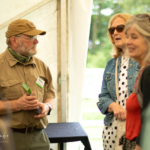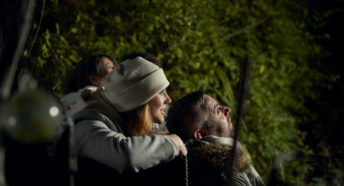August / September Dark Skies Update 2022
If you haven’t notices the nights are beginning to draw in and the last dog walk of the day through mid August have shown some brilliant night skies and great opportunities for lunar / moon observation.
In addition we have begun to see some of the fantastic first images from the James Webb telescope in the press and on the internet.
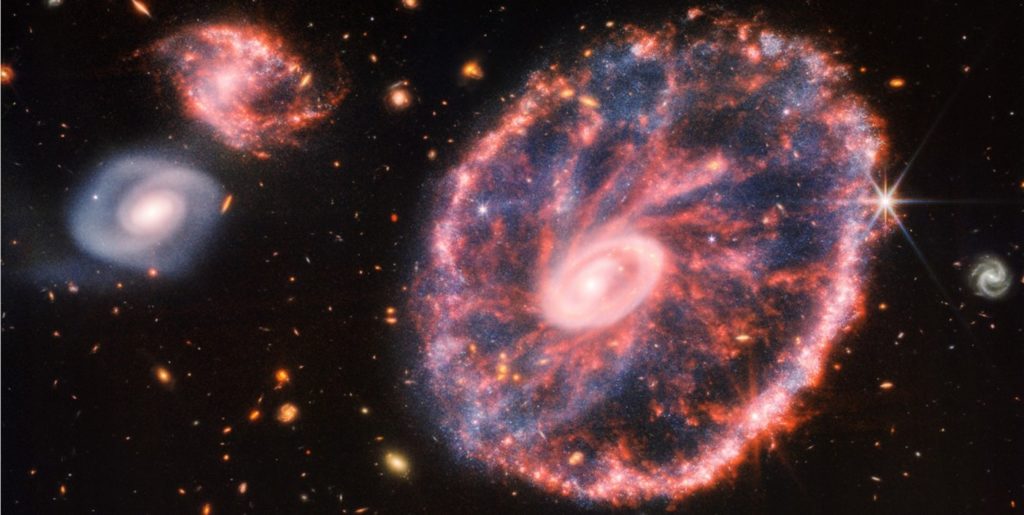
A composite image captured by the James Webb Space Telescope’s MIRI and NIRCam instruments reveals the odd Cartwheel galaxy in an unprecedented detail. (Image credit: NASA, ESA, CSA, STScI)
Keep a watch out on the following web site:
https://www.space.com/news/live/james-webb-space-telescope-updates
In mid-August at the time of writing, key constellations are beginning to appear – looking to the North East we have good views of Cassiopeia characterised by its “W” shape

To the north of Cassiopeia, looking like a gable end of a house is Cepheus – you can orientate and be sure you are identifying Cepheus by checking the picture below and aligning with the North Star / Big Dipper and Cassiopeia

If you look south, you can see the three stars that form Deneb and make up Cygnus.
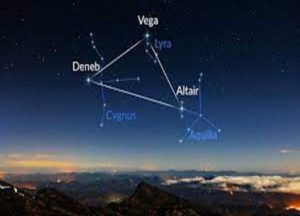
Slightly belatedly just remember the Perseid meteor shower. This peaks around 12th August but continues through the month
Which means you could head out tonight and have a good chance of spotting some meteors.
How to watch the Perseids meteor shower from the UK. You won’t need a telescope or binoculars to see the meteors – they can easily be seen with the naked eye.
The best way to catch a glimpse of the radiant show is away from the lights of towns, cities, buildings, and trees, and where there is a clear view of the horizon – in other words try our dark sky areas!
Although the meteors appear to emanate from the constellation of Perseus (which is how they got their name), they can appear anywhere in the sky, so try to find somewhere with the broadest view of the sky possible.
Observers have been advised to plan and check the forecast before in case the weather is unpleasant, so they can travel to a new location or go out on a different day.
Moving into September, the sane constellations as above are showing well, but more planets are visible.
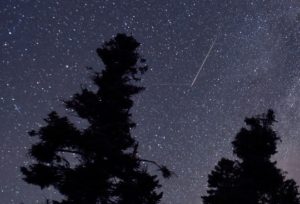
Mars is moving eastwards across Taurus:
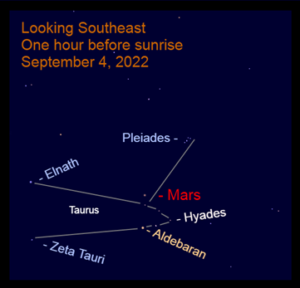
Yes, Mars does look red! Spot with your Binoculars. The Pleiades reduce in number the older you get! So children should be able to use the Pleiades as a navigation point to find Taurus and Mars.
Other planets are as shown in the infogram / picture below
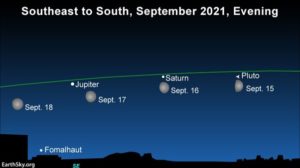
As we move into Autumn there are a number of events taking place, it’s not an exhaustive list, but it will keep you busy.
Title and link attached below:
Dark Skies Fringe Festival (21 – 30 October 2022) – https://www.northyorkmoors.org.uk/visiting/whats-on/dark-skies-festival
A wonderful night exploring the Milky Way and summer stars – 3rd of September – https://www.eventbrite.co.uk/e/milky-way-night-and-summer-stars-tickets-317083464177?aff=gostargazing
Public Stargazing in Dalby Forest – October 2022 Fri, 7 Oct, 21:00–22:30 – https://gostargazing.co.uk/events/public-stargazing-in-dalby-forest-october-2022/
Full Moon Walk – North York Moors (Sutton Bank) 8th November – https://www.meetup.com/large-outdoors-weekends-adventures-south-yorkshire/events/279617062/
Yorkshire Dales November 26th Malham Cove Dark Skies Walk – https://allevents.in/skipton/malham-cove-dark-skies-walk/200022491233757
Ribblehead viaduct Photography and dark skies walk – https://www.photographyexperiences.com/ribblehead?ref=https%3A%2F%2Fwww.photographyexperiences.com%2Fa%2F2147514900%2FW3A9XboP
If you see the single telescope up by Malham Tarn its possibly me – stop for a chat and a sight through the scope – weather permitting.



